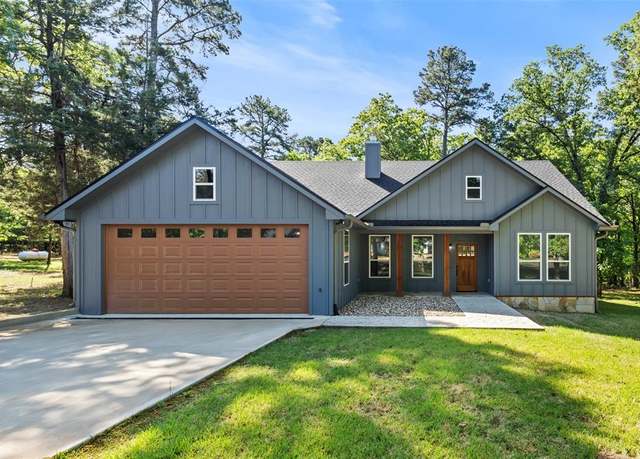White marble countertops are a timeless choice for homeowners and designers seeking elegance, sophistication, and natural beauty. Known for its luxurious appearance and unique veining, white marble has been a symbol of refinement for centuries. Whether remodelling your kitchen, upgrading your bathroom, or designing a commercial space, white marble countertops can elevate your aesthetic appeal.
But what makes white marble such a popular choice? Are there any downsides to consider? How do you maintain its pristine beauty? In this guide, we’ll explore the types of white marble countertops, their pros and cons, care tips, and answers to common questions. By the end, you’ll have all the information you need to decide if white marble countertops fit your home or project.
Why Choose White Marble Countertops?
White marble countertops are prized for their natural beauty and versatility. Below are some of the top reasons why homeowners and designers love them:
- Timeless Aesthetic:
- White marble has been used for centuries in iconic buildings and sculptures, making it a timeless choice that never goes out of style.
- Unique Veining Patterns:
- Each marble slab is unique, with natural veining that adds character and individuality to your countertops.
- Brightens Any Space:
- The white reflects light, making kitchens and bathrooms appear larger and more inviting.
- Versatility:
- White marble complements various design styles, from modern minimalism to traditional elegance.
- Durable and Heat Resistant:
- Marble is naturally heat-resistant, making it a great surface for baking and cooking.
Types of White Marble Countertops
Not all white marble is the same. Here are the most popular types of white marble countertops to consider:
- Carrara Marble
- Appearance: Soft white or grey background with subtle, linear veining.
- Cost: One of the most affordable options for white marble.
- Best For: Kitchens, bathrooms, and backsplashes due to their elegance.
- Calacatta Marble
- Appearance: Bright white background with dramatic, bold veining.
- Cost: More expensive than Carrara due to its rarity and striking appearance.
- Best For: High-end kitchens and statement islands.
- Statuario Marble
- Appearance: Pure white with distinct, grey veining less busy than Carrara.
- Cost: Premium pricing due to its exclusivity.
- Best For: Bathrooms, luxury countertops, and artistic focal points.
- Thassos Marble
- Appearance: Pure, solid white with no visible veining.
- Cost: Mid-to-high range.
- Best For: Ultra-modern and minimalist designs.
- Danby Marble
- Appearance: Warm white with subtle veining, often with a golden or beige hue.
- Cost: Comparable to Carrara.
- Best For: Rustic or transitional designs.
Pros and Cons of White Marble Countertops
Pros
- Natural Beauty: Nothing compares to the organic elegance of marble.
- Durability: With proper care, marble can last a lifetime.
- Cool Surface: Ideal for bakers and chefs, as marble stays naturally cool.
- Adds Value: White marble can increase your home’s resale value.
Cons
- Porous Material: Marble is prone to staining from acidic substances like wine, coffee, or citrus.
- Scratches Easily: Although durable, marble is softer than granite and can scratch.
- High Maintenance: Requires regular sealing and gentle cleaning.
- Cost: High-quality white marble can be expensive.
How to Maintain White Marble Countertops
To keep your white marble countertops looking pristine, follow these maintenance tips:
- Sealing
- Apply a marble sealant every 6–12 months to protect against stains and moisture.
- Daily Cleaning
- Use a pH-neutral cleaner or mild dish soap with warm water. Avoid abrasive or acidic cleaners.
- Preventing Stains
- Wipe up spills immediately, especially from acidic or dark liquids like wine or tomato sauce.
- Avoid Scratches
- Use cutting boards and avoid placing heavy pots or pans directly on the surface.
- Polishing
- For added shine, consider professional polishing every few years.
Frequently Asked Questions
- Is white marble hard to maintain?
White marble requires more maintenance than materials like quartz or granite. Regular sealing and careful cleaning are essential, but the beauty it adds is often worth the effort.
- Can I use white marble countertops in a busy kitchen?
Yes, but you’ll need to diligently clean and protect diligently clean and protect the surface. Consider honed marble for a matte finish that shows fewer scratches and etches.
- What is the cost of white marble countertops?
Prices range from $40 to $200 per square foot, depending on the marble type and the slab’s quality. Carrara is typically the most affordable, while Calacatta and Statuario are more expensive.
- Does marble stain easily?
Marble is porous and can stain if spills are not cleaned quickly. Regular sealing helps reduce the risk of staining.
Design Ideas for White Marble Countertops
Looking for inspiration? Here are a few design ideas to incorporate white marble into your home:
- Classic Kitchen: Pair Carrara marble with white cabinets and subway tiles for a timeless look.
- Modern Minimalism: Use Thassos marble with sleek, black cabinetry for contrast.
- Luxury Bathroom: Install Calacatta marble for a spa-like atmosphere with gold fixtures.
- Rustic Charm: Combine Danby marble with wooden elements for a cosy, farmhouse vibe.
Conclusion
White marble countertops are a timeless investment that can transform any space into a luxurious retreat. While they require extra care and maintenance, their unmatched beauty, durability, and versatility make them a favourite for homeowners and designers alike.
If you’re considering white marble countertops for your home, weigh the pros and cons, choose the right type, and follow proper maintenance practices. With the right approach, your marble countertops will remain stunning for years’












 Afrikaans
Afrikaans Shqip
Shqip አማርኛ
አማርኛ العربية
العربية Հայերեն
Հայերեն Azərbaycan dili
Azərbaycan dili Euskara
Euskara Беларуская мова
Беларуская мова বাংলা
বাংলা Bosanski
Bosanski Български
Български Català
Català Cebuano
Cebuano Chichewa
Chichewa 简体中文
简体中文 繁體中文
繁體中文 Corsu
Corsu Hrvatski
Hrvatski Čeština
Čeština Dansk
Dansk Nederlands
Nederlands English
English Esperanto
Esperanto Eesti
Eesti Filipino
Filipino Suomi
Suomi Français
Français Frysk
Frysk Galego
Galego ქართული
ქართული Deutsch
Deutsch Ελληνικά
Ελληνικά ગુજરાતી
ગુજરાતી Kreyol ayisyen
Kreyol ayisyen Harshen Hausa
Harshen Hausa Ōlelo Hawaiʻi
Ōlelo Hawaiʻi עִבְרִית
עִבְרִית हिन्दी
हिन्दी Hmong
Hmong Magyar
Magyar Íslenska
Íslenska Igbo
Igbo Bahasa Indonesia
Bahasa Indonesia Gaeilge
Gaeilge Italiano
Italiano 日本語
日本語 Basa Jawa
Basa Jawa ಕನ್ನಡ
ಕನ್ನಡ Қазақ тілі
Қазақ тілі ភាសាខ្មែរ
ភាសាខ្មែរ 한국어
한국어 كوردی
كوردی Кыргызча
Кыргызча ພາສາລາວ
ພາສາລາວ Latin
Latin Latviešu valoda
Latviešu valoda Lietuvių kalba
Lietuvių kalba Lëtzebuergesch
Lëtzebuergesch Македонски јазик
Македонски јазик Malagasy
Malagasy Bahasa Melayu
Bahasa Melayu മലയാളം
മലയാളം Maltese
Maltese Te Reo Māori
Te Reo Māori मराठी
मराठी Монгол
Монгол ဗမာစာ
ဗမာစာ नेपाली
नेपाली Norsk bokmål
Norsk bokmål پښتو
پښتو فارسی
فارسی Polski
Polski Português
Português ਪੰਜਾਬੀ
ਪੰਜਾਬੀ Română
Română Русский
Русский Samoan
Samoan Gàidhlig
Gàidhlig Српски језик
Српски језик Sesotho
Sesotho Shona
Shona سنڌي
سنڌي සිංහල
සිංහල Slovenčina
Slovenčina Slovenščina
Slovenščina Afsoomaali
Afsoomaali Español
Español Basa Sunda
Basa Sunda Kiswahili
Kiswahili Svenska
Svenska Тоҷикӣ
Тоҷикӣ தமிழ்
தமிழ் తెలుగు
తెలుగు ไทย
ไทย Türkçe
Türkçe Українська
Українська اردو
اردو O‘zbekcha
O‘zbekcha Tiếng Việt
Tiếng Việt Cymraeg
Cymraeg isiXhosa
isiXhosa יידיש
יידיש Yorùbá
Yorùbá Zulu
Zulu